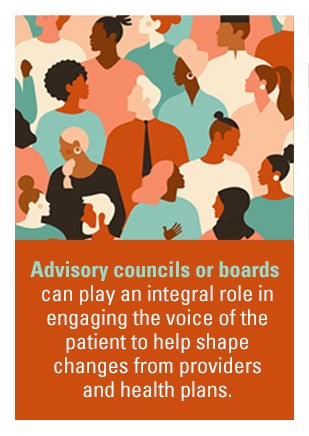

3 Ways to Expand Community, Patient Engagement

Health care has reached an inflection point with patient and community engagement. To resolve disparities in care, increase access and help people achieve their highest potential for health, providers need to continue to find ways to meaningfully engage the individuals they serve.
While organizations have been on this journey for some time, many opportunities still exist to further involve community groups and patients in the design, development and implementation of services, notes a recent Commonwealth Fund report.
To accelerate progress, providers should connect with patients and community groups in more intentional and meaningful ways. Focusing on ways to elicit information about people’s lives can help caregivers understand issues like why patients often don’t seek needed care and what support they may need to stay healthy. This feedback can inform providers’ strategies for reducing health disparities and help patients recognize the role they play in their own health.
The Value of Advisory Councils
Advisory councils or boards can play an integral role in engaging the voice of the patient to help shape changes from providers and health plans. But some organizations are going a step further. Asian Health Services, a Federally Qualified Health Center in the San Francisco area, has established seven patient leadership councils, representing those whose first language is Cantonese, Khmer, Korean, Mandarin, Tagalog or Vietnamese.
 Leadership council members receive training in such health topics as diabetes, mental health, and the importance of having health insurance, and are then encouraged to educate their broader communities as ambassadors. Asian Health Services staff also have partnered with patients to create healthier neighborhoods and workplaces.
Leadership council members receive training in such health topics as diabetes, mental health, and the importance of having health insurance, and are then encouraged to educate their broader communities as ambassadors. Asian Health Services staff also have partnered with patients to create healthier neighborhoods and workplaces.
Recently, the organization’s staff responded to increasing racist attacks on Asians throughout the nation and in the Bay Area amid political and public rhetoric blaming Asians for the pandemic. The health center established a victims’ support fund and has been providing escorts for staff entering and leaving clinic sites. It is also developing culturally tailored therapy and support for victims.
The Power of Active Listening
Finding new and better ways to communicate with patients, especially those who have experienced severe trauma, can be a powerful way to form stronger bonds with patients. The Trauma-informed Linkage to Care Clinic at the Institute for Family Health in New York City cares for those who have been trafficked for sex or labor or who have experienced other trauma like domestic abuse.
Anita Ravi, M.D., who founded the practice originally started as a pilot called the PurpLE Clinic (short for Purpose: Listen and Engage), began making changes based on patient feedback in one-on-one interactions. She began offering longer appointments than the typical 20-minute primary care visit to accommodate individual survivors’ needs, emphasizing that all care is confidential, and using pictures rather than words in flyers for patients who couldn’t read.
Ravi also began making cartoon drawings to help other clinicians understand why patients — some of whom were living in the subway or storage units — were no-shows to appointments (e.g., they lacked subway fare) or couldn’t follow medical advice; for example, not being able to take medication with food if they couldn’t afford to eat.
The program has gone on to provide survivors with integrated physical and mental health care, as well as employment programs to help them regain their financial footing.
3 Tools to Expand Your Engagement Efforts
The following AHA resources can help hospitals and health systems further develop their community and patient engagement strategies.
- “Addressing Inequities in COVID-19 Vaccine Administration Efforts” covers how to expand on existing alliances and build new collaborative efforts to disseminate and amplify accurate, accessible information to communities most impacted by the pandemic.
- “Screening for Social Needs: Guiding Care Teams to Engage Patients” from the AHA Value Initiative helps hospitals and health systems facilitate sensitive conversations with patients about their nonmedical needs that may be barriers to good health.



